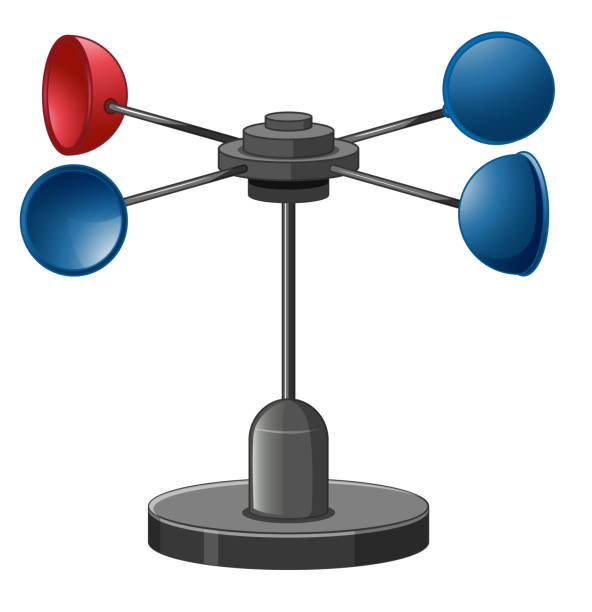Comparing Digital and Mechanical Anemometers: Which is Right for You?
Comparing Digital and Mechanical Anemometers: Which is Right for You?
Blog Article
Discovering the Functions and Benefits of Anemometers for Weather Enthusiasts and Professionals
From cup anemometers to sonic anemometers, each type brings its one-of-a-kind set of applications and benefits, shedding light on numerous elements of atmospheric problems. As we delve right into the features and benefits of anemometers, a much deeper understanding emerges not just of prevailing weather sensations but additionally of the wider effects for markets like wind energy manufacturing and environmental research study.
Significance of Anemometers in Climate Tracking
Anemometers play a vital role in climate monitoring by giving precise dimensions of wind speed, helping in projecting and understanding weather condition patterns. These tools, ranging from typical cup anemometers to contemporary ultrasonic anemometers, are essential for meteorologists, scientists, and climate enthusiasts alike. By determining wind rate, anemometers help in determining the intensity of climate phenomena such as hurricanes, hurricanes, and storms. In addition, they provide important information for aeronautics, maritime procedures, and various markets that are sensitive to wind conditions.

Kinds of Anemometers and Their Applications
The most usual types of anemometers consist of cup anemometers, vane anemometers, hot-wire anemometers, and ultrasonic anemometers. Mug anemometers consist of 3 or four mugs mounted on straight arms that rotate with the wind, determining its speed. Vane anemometers, on the various other hand, use an easily rotating vane to line up with the wind instructions, offering both wind rate and direction dimensions.
Each type of anemometer has its special advantages and applications. Cup anemometers are appropriate and durable for general climate monitoring, while vane anemometers are preferred for directional dimensions. Hot-wire anemometers are sensitive to reduced air rates, making them suitable for indoor atmospheres. Ultrasonic anemometers are non-intrusive and supply high precision, usually used in research study and specialized weather tracking applications. Recognizing the characteristics and applications of each type of anemometer is critical for selecting the most proper tool for specific weather condition checking needs.
Advantages of Using Anemometers in Forecasting
In meteorology, the usage of anemometers provides vital advantages for improving the accuracy of weather projecting. Anemometers gauge wind rate and direction, providing essential data for forecasting climate patterns. By integrating wind data into projecting designs, meteorologists can better understand the activity of climate systems, expect changes in climatic problems, and problem more precise projections.
Furthermore, anemometers play an important role in assessing possible weather condition risks. Monitoring wind rates assists forecasters predict extreme weather condition events such as storms, twisters, and winter season tornados with greater precision. This early caution system enables authorities to release timely signals and execute necessary precaution, lowering the risks to life and residential or commercial property.
Additionally, anemometers help in maximizing sustainable power production. By examining wind patterns, meteorologists can identify appropriate areas for wind farms and forecast power outcome, adding to the efficient generation of wind power.

Anemometers in Wind Power Manufacturing
Given the important role anemometers play in offering precise wind information for climate projecting and hazard assessment, their relevance expands to the world of wind power manufacturing. Anemometers are essential instruments in the field of wind energy, where the measurement of wind speed and direction is vital for establishing the feasibility and important source efficiency of wind turbine installations. By accurately measuring wind speeds at varying heights, anemometers help optimize the placement and design of wind generators to optimize power outcome.
In wind farms, anemometers are tactically put to gather real-time wind data that is used to assess the potential power manufacturing of a website. This information contributes in figuring out the financial practicality of wind energy jobs and in forecasting energy generation to ensure grid security. In addition, anemometers aid in keeping track of wind conditions to optimize generator efficiency, stop damage from high winds, and ensure the safety of employees operating in the vicinity of wind generators.
Enhancing Climate Comprehending With Anemometers

Anemometers play a key role in enhancing our understanding of microclimates. These local climate condition can vary significantly from broader local projections, making it necessary to have precise data for particular areas. anemometer. By strategically placing anemometers in numerous areas, scientists can gather detailed details on just how wind acts in various terrains, urban environments, or bodies of water
Moreover, anemometers add to boosting weather condition forecasting versions by supplying real-time data on wind behavior. This details is specifically valuable for forecasting extreme weather condition events, maximizing agricultural practices, and sustaining industries like aeronautics and maritime navigation. In general, anemometers are invaluable tools that enable us to dive deeper right into the complexities of climate systems, eventually leading to even more better-informed decisions and exact predictions.
Verdict
In verdict, anemometers play an essential function in climate surveillance and forecasting by measuring wind speed and instructions. Anemometers additionally have applications in wind power manufacturing, further highlighting their relevance in both weather forecasting and eco-friendly power sectors.
From cup anemometers to sonic anemometers, each type brings its special collection of benefits and applications, shedding light on various elements of atmospheric problems. These tools, varying from typical mug anemometers to modern-day ultrasonic anemometers, are essential for meteorologists, researchers, and weather lovers alike. The most typical types of anemometers include cup anemometers, vane anemometers, hot-wire anemometers, and ultrasonic anemometers. Cup anemometers are robust and suitable for basic climate surveillance, while vane anemometers are preferred for directional dimensions. Anemometers are crucial instruments in the field of wind energy, where the measurement of wind rate and instructions click for more is critical for determining the usefulness and performance of wind generator setups.
Report this page